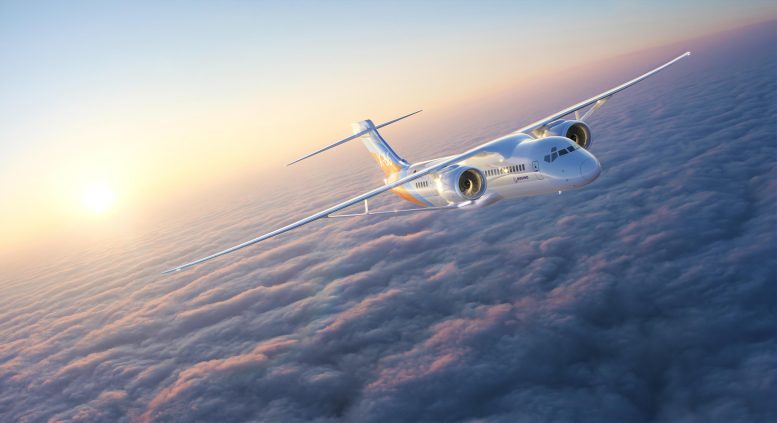
Artist’s concept of the X-66 aircraft that Boeing will produce through NASA’s Sustainable Flight Demonstrator project. Credit: NASA
NASA and Boeing are developing the X-66, an innovative aircraft designed to advance net-zero aviation emissions by 2050. Featuring the Transonic Truss-Braced Wing concept, it promises significant fuel and emissions reductions.
As NASA and Boeing enter the early stages of producing the X-66, the first X-plane specifically focused on helping the United States achieve net-zero aviation emissions by 2050, the team is already picturing what the aircraft will look like soaring above the clouds.
A new rendering of the X-66 from Boeing demonstrates the aircraft’s signature extra-long, thin wings stabilized by diagonal struts, known as the Transonic Truss-Braced Wing concept. When combined with other advancements in propulsion systems, materials, and systems architecture, this configuration could result in up to 30% less fuel consumption and reduced emissions when compared with today’s best-in-class aircraft.
Under the Sustainable Flight Demonstrator project, Boeing will work with NASA to build, test, and fly the full-scale X-66 demonstrator aircraft. The project seeks to inform a new generation of more sustainable single-aisle aircraft – the workhorse of passenger airlines around the world. Boeing transported the MD-90 aircraft that will be turned into the X-66 to its Palmdale, California facility last year, and has removed its engines as the modifications started.
The X-66 is a key part of NASA’s Sustainable Flight National Partnership, through which the agency seeks to protect the environment, grow the U.S. economy, and provide new innovations for the traveling public.









Be the first to comment on "Soaring to Sustainability: NASA and Boeing’s X-66 Pioneers Net-Zero Emissions"